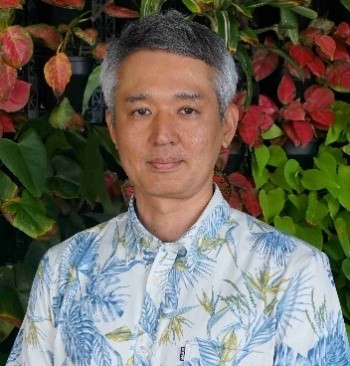Overview of Demonstration Project Aimed at Harnessing Renewable Energy on Remote Islands
Okinawa Prefecture is located at the southernmost tip of the Japanese archipelago, comprising a vast expanse of sea spanning 1,000 kilometers east to west and 400 kilometers north to south, consisting of approximately 160 islands of various sizes. Among these, there are 37 inhabited islands where 1.46 million people reside.
Okinawa Electric Power Company (OEPC) is a vertically integrated electric utility company engaged in all generation, transmissions, and distribution. The OEPC supplies electricity to all inhabited islands in Okinawa Prefecture. The prefecture has 11 independent power systems, and due to the small scale of the island grids other than the main island of Okinawa, diesel power generation serves as the primary source.
The OEPC has been forward-thinking in integrating solar and wind from the perspectives of climate change countermeasures and fuel cost reduction on the islands. However, on small grids, the widespread integration of intermittent renewable resources such as solar and wind power can pose technical challenges regarding energy balance, subsequently affecting grid frequency. To cope with this, the company has focused on developing battery control technology to stabilize grid frequency by mitigating solar and wind power fluctuations.
Moreover, as renewable energy increases, diesel units face operational challenges, with decreased output levels reducing negative headroom and necessitating corrective action through suppressing renewable energy output. As a substitute for diesel units, while maintaining grid support capability, OEPC has developed a motor-driven generator powered by renewable-charged batteries, known as an MG set. The MG set comprises generators, AC induction motors, and batteries, addressing the negative headroom issue. Additionally, the MG set allows for battery charging during periods of excess electric supply, particularly when operating in regenerative charging mode. In 2020, on Hateruma Island, all diesel generators were provisionally stopped, and this grid, alongside wind power, MG sets, and batteries, achieved a 100% renewable energy supply for around ten continuous days.
This webinar showcases two demonstration projects: 1) a Grid stabilization project with advanced battery controls on Miyako Island and 2) a 100% renewable energy supply project using the MG set on Hateruma Island.
Date and Time
Location
Hosts
Registration
-
 Add Event to Calendar
Add Event to Calendar
Loading virtual attendance info...
- Contact Event Hosts
- Co-sponsored by University of California Riverside
Speakers
 Mr. Yusuke Kuniba of Okinawa Electric Power Company
Mr. Yusuke Kuniba of Okinawa Electric Power Company
Mr. Yusuke Kuniba (Okinawa Electric Power Company)
Biography:
Mr. Yusuke Kuniba obtained his Bachelor of Engineering degree from Saitama University in March 1998 and his Master of Engineering degree from Kyushu University in March 2000. He joined Okinawa Electric Power Company in April 2000, where he worked in the Research and Development Department, primarily focusing on research related to integrating renewable energy with system stabilization on small-scale isolated island grids.
In 2003, Mr. Kuniba, who had already grown passionate about international collaboration, participated in a demonstration project of a hybrid system consisting of diesel power generation, solar power, and batteries in small-scale isolated island systems in Thailand.
Mr. Kuniba earned an MSc degree from UC Irvine in 2007, investigating the SOFC-Gas Turbine Hybrid System at the National Fuel Cell Research Center. From 2017 to 2019, he was involved in a project on Hateruma Island, Okinawa Prefecture, which aimed to achieve 100% renewable energy supply using wind power generation, MG sets, and batteries.
Currently, he is responsible for overseas business development in the Business Development Department of Okinawa Electric Power Company. His expertise is not limited to electrical engineering but extends to mechanical engineering through his qualification as a Certified Engineer (Mechanical Engineering).
Address:Okinawa, Japan, 901-2602
Okinawa Electric Power Company

